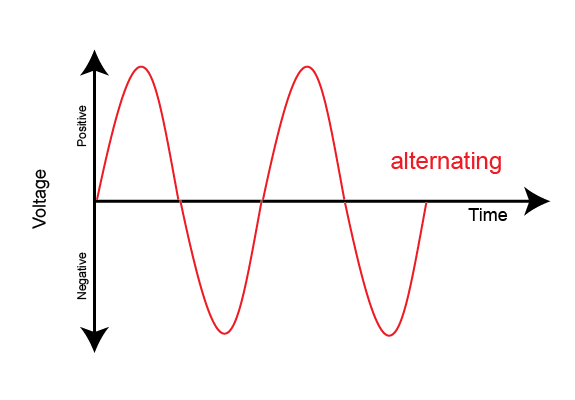What is the full form of AC?AC: Alternating CurrentAC stands for Alternating Current. It refers to a current in which the movement of an electric charge changes direction periodically. In other words, alternating current changes its direction and magnitude periodically, i.e., it starts from 0 grows to maximum, returns to 0 and again grows to the maximum in the opposite direction and then again reaches the original value of 0. Nikola Tesla was the inventor of AC Current. 
This cycle is repeated continuously as long as the AC is flowing in the circuit. Alternating Current is different from direct current (DC) as DC flows only in one direction. The generation and transmission of AC are very easy as compared to DC. So, it is the AC that is used in mains-wired buildings such as homes, offices, factories and other buildings. AC is also used in electric motors that convert electric energy into mechanical energy. Electric motors are present in various electrical appliances like washing machines, refrigerators, etc. Alternating Current Production:AC can be generated by using devices that are known as alternators. However, there are also different methods to generate AC by using various circuits. Besides this, one of the easiest ways to produce AC is by using a single coil AC generator that comprises two-pole magnets and a single loop of rectangle-shaped wire. In this method, AC is produced based on Faraday's principle of electromagnetic induction in which mechanical energy is converted into electrical energy. Meanwhile, three wires are utilized to deliver AC to various types of equipment. The following is the list:
Application of Alternating CurrentThe most common type of current used in various appliances is AC. A few alternating current examples are audio signals, radio signals, etc. Alternating current has many advantages over direct current because it can carry electricity across long distances with little energy loss. Because it is much simpler to produce and deliver AC across long distances, it is primarily used in homes and offices. Transformers, make it simple to convert AC to and from high voltages. Electric motors that further transform electrical energy into mechanical energy can also be driven by AC. As a result, AC is also used in numerous major appliances, including refrigerators, dishwashers, and many more. Advantages of Alternating Current I Advantages of AC over DC
Disadvantages of Alternating Current
Next TopicFull Forms List
|
 For Videos Join Our Youtube Channel: Join Now
For Videos Join Our Youtube Channel: Join Now
Feedback
- Send your Feedback to [email protected]
Help Others, Please Share










